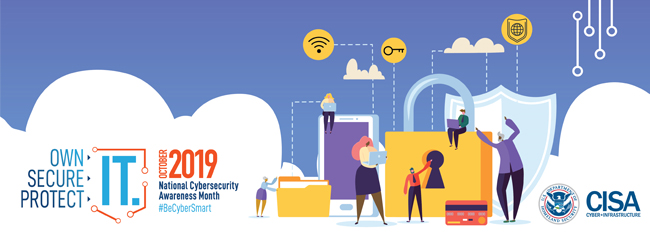Written by Guy McAllister, Director, Privacy & Security - iatricSystems

October is National Cybersecurity Awareness Month and the emphasis focuses on the mantras of Own IT, Secure IT, Protect IT. This is the first in a series of weekly blogs this month where we will be diving into these topics, specifically in how they relate to Healthcare IT. Today, I will be expanding on the “Own It” mantra as it relates to securing remote access to your network with remote vendors and employees.
Before I start talking about remote access security, I wanted to remind you that in ongoing support of National Cybersecurity Awareness Month, we hosted a series of five short 10-minute webinars each day the last week in October called "Cybersecurity Coffee Chats." We covered topics including remote access security, multi-factor authentication, phishing, and patient privacy.
Click this link to access the entire Cybersecurity coffee chat series.
Now, let's talk about remote access. I enjoy being mobile in my work and personal life. The freedom and convenience is valuable to my workday. Likewise, allowing your employees and vendors to access your network remotely allows you to keep your organization running. Part of "Owning It" is recognizing the fact that we live and work in a mobile society, and along with that comes some responsibility.
That responsibility is understanding what can be done to protect the data you own while maintaining that mobility in the workplace for you, your vendors, and your employees.
All of these items are applicable to you both as a professional working from a remote location, allowing access to third-party vendors, and personally as you travel and remain connected.
Today, mobile connectivity is an accepted way of life; however, mobile users must always be diligent and careful with work data and personal data when connected, especially in healthcare when Protected Health Information may be involved.
Whether it is work data or personal data, you own it, so always protect it!
You can watch the recording of "Protect Data with Remote Access Security" below.
{% video_player "embed_player" overrideable=False, type='scriptV4', hide_playlist=True, viral_sharing=False, embed_button=False, width='1920', height='1080', player_id='19685002721', style='' %}Click this link to access the entire Cybersecurity coffee chat series.
For more information about securing your vendors or employees remote access, you can watch this quick video. Contact me if you want to talk about your specific challenges.